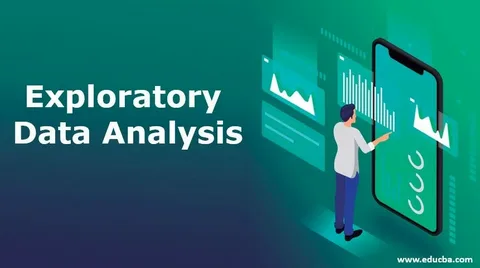Introduction
Every successful data science project begins with understanding the data. Before applying complex machine learning models or building predictive pipelines, analysts must explore, clean, and visualise the data to uncover patterns, anomalies, and underlying structures. This process, known as Exploratory Data Analysis (EDA), forms the foundation for all subsequent analytical steps.
For students pursuing a Data Science Course in Bangalore, mastering EDA is critical. It equips them with the ability to identify trends, detect anomalies, and select suitable modelling strategies, ensuring that data-driven insights are both accurate and actionable. In this article, we delve into the principles, techniques, and practical applications of EDA in data science.
What Is Exploratory Data Analysis?
Exploratory Data Analysis is the process of examining datasets to summarise their main characteristics using statistical and visual techniques. Unlike formal modelling or hypothesis testing, EDA is open-ended, allowing analysts to discover insights without preconceived notions.
The primary goals of EDA include:
- Understanding the distribution of variables
- Detecting outliers and anomalies
- Identifying relationships between variables
- Informing feature selection and transformation
- Providing visual representations to communicate findings effectively
EDA is not only a preliminary step; it is an iterative and continuous process that informs decisions throughout the project lifecycle.
Core Steps in EDA
Performing EDA effectively involves several key steps:
1. Data Collection and Overview
Begin by gathering all relevant datasets and obtaining a high-level view. This includes reviewing data types, missing values, and basic statistics such as mean, median, SD, and range. Understanding these fundamentals provides a solid context for further analysis.
2. Data Cleaning
Raw data often contains missing values, duplicates, and inconsistencies. Addressing these issues is crucial to preventing bias in analysis. Techniques such as imputation, removal, or transformation help prepare the data for accurate exploration.
3. Univariate Analysis
Examine each variable individually to understand its distribution, central tendency, and variability. Visual tools such as histograms, bar charts, and box plots are particularly useful. For instance, a histogram of sales data might reveal seasonal peaks or unexpected spikes.
4. Bivariate and Multivariate Analysis
Get an exploration of relationships between two or more variables using scatter plots, correlation matrices, or grouped bar charts. Understanding these relationships helps identify potential predictors and inform feature engineering. For example, analysing the correlation between marketing spend and revenue can guide model development.
5. Outlier Detection
Outliers can significantly skew analysis results. Techniques like box plots or Z-score evaluation help detect anomalous values, enabling analysts to decide whether to retain, transform, or remove them.
6. Feature Engineering and Transformation
EDA often reveals opportunities to create new features or transform existing ones. For instance, splitting a “date” column into day, month, and year can provide more granular insights. Similarly, categorical variables might need encoding for machine learning models.
Techniques and Tools for EDA
EDA can be performed using a combination of statistical methods and visualisation tools. Some widely used techniques include:
- Descriptive Statistics – Summary metrics such as mean, median, mode, variance, and standard deviation
- Data Visualisation – Histograms, bar charts, scatter plots, heatmaps, and box plots for patterns and trends
- Correlation Analysis – Identifying relationships between numerical variables using correlation coefficients
- Dimensionality Reduction – Techniques like PCA to simplify complex datasets
- Automated EDA Tools – Libraries and packages that provide quick summaries and visualisations, enhancing efficiency
For students enrolled in a Data Science Course in Bangalore, hands-on practice with these tools is invaluable for mastering EDA.
Benefits of EDA
The advantages of a thorough EDA process include:
- Error Detection: Identify missing values, inconsistencies, or incorrect data types before modelling.
- Better Model Selection: Understanding variable relationships helps choose the right algorithms.
- Feature Importance: Highlight key variables that influence outcomes, aiding feature selection and engineering.
- Data Storytelling: Visual insights from EDA help communicate findings effectively to stakeholders and decision-makers.
- Risk Mitigation: Detecting anomalies early reduces the risk of misleading conclusions in predictive modelling.
By mastering EDA, learners can ensure that their models are built on high-quality, well-understood data, significantly increasing the likelihood of project success.
Real-World Applications of EDA
EDA is widely applicable across industries:
- Finance: Detecting fraudulent transactions and understanding customer behaviour
- Healthcare: Analysing patient demographics and treatment outcomes
- Retail: Understanding sales trends, inventory patterns, and customer segmentation
- Marketing: Evaluating campaign performance across demographics and channels
- Operations: Identifying inefficiencies in supply chains or production processes
These practical examples demonstrate that EDA is not just an academic exercise but also a critical step in real-world data science projects.
Best Practices for EDA
To perform EDA effectively, consider the following best practices:
- Understand Your Objectives: Identify key questions and goals before diving into data exploration.
- Iterate Frequently: EDA is an iterative process; new insights often emerge as analysis progresses.
- Combine Techniques: Use a mix of statistics, visualisations, and domain knowledge to gain a holistic understanding.
- Document Insights: Maintain clear records of findings, anomalies, and decisions for reproducibility.
- Communicate Visually: Prioritise visual storytelling to make complex data accessible to all stakeholders.
By following these practices, students and professionals can make EDA an integral and impactful part of their data science workflow.
Conclusion
Exploratory Data Analysis is the cornerstone of any data science project. It transforms raw, unstructured data into a clear understanding of trends, patterns, and anomalies, laying the groundwork for accurate modelling and insightful decision-making.
For students in a Data Science Course in Bangalore, developing strong EDA skills ensures that they can approach projects systematically, identify potential issues early, and communicate insights effectively. From univariate analysis to complex multivariate exploration, EDA equips learners with the tools and mindset needed to turn data into actionable knowledge.
By mastering EDA, aspiring data scientists not only enhance their technical capabilities but also gain the confidence to make data-driven decisions that drive tangible business impact. In the fast-evolving landscape of data science, proficiency in EDA is non-negotiable for success.

